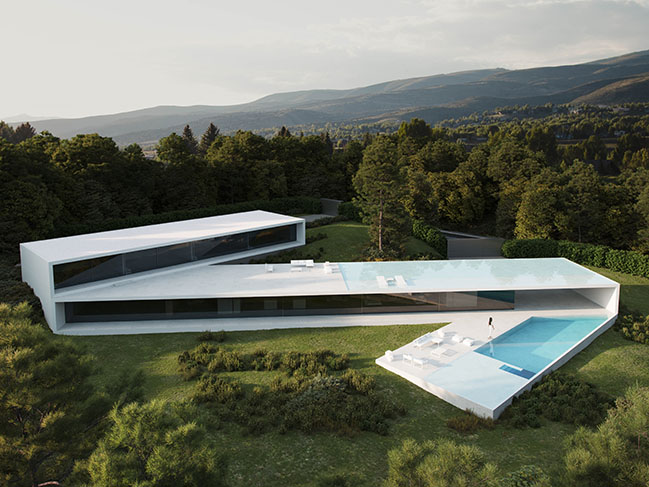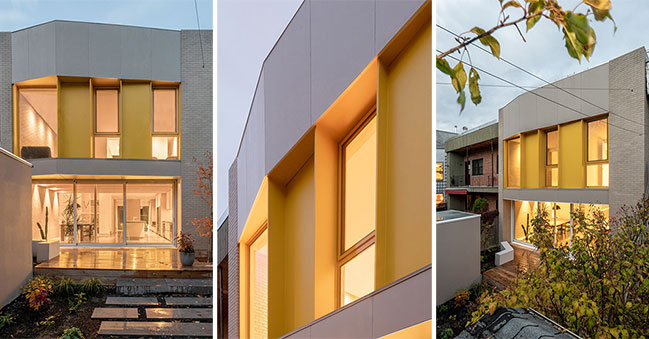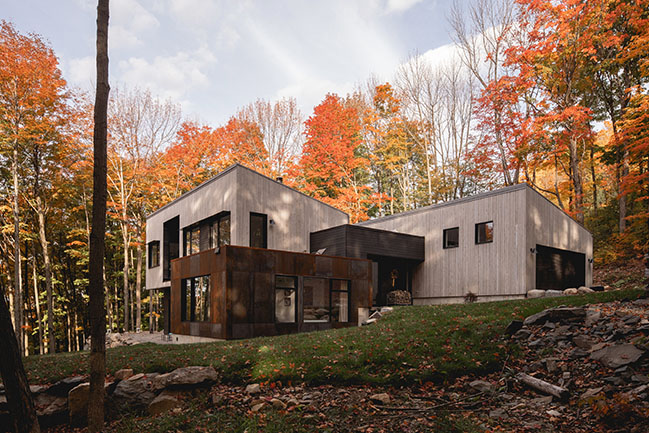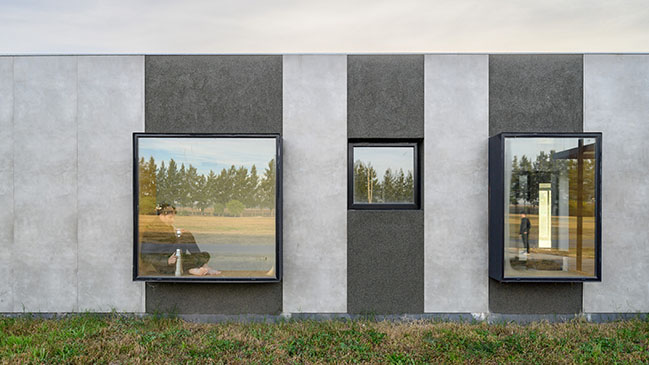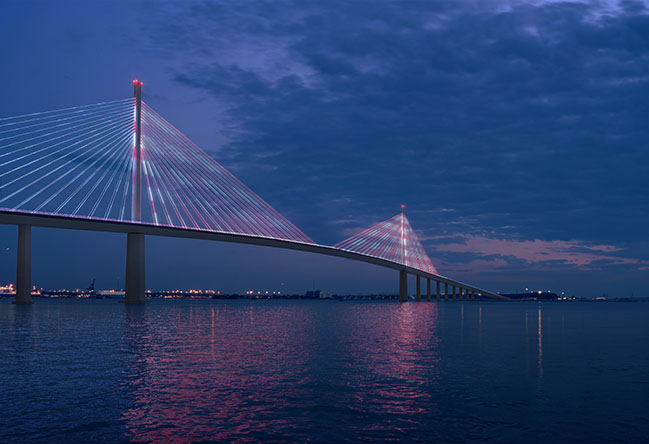12 / 23
2022
ACDF Architecture is proud to unveil the Apple Tree House - A modernist glass residence embracing nature at its core...
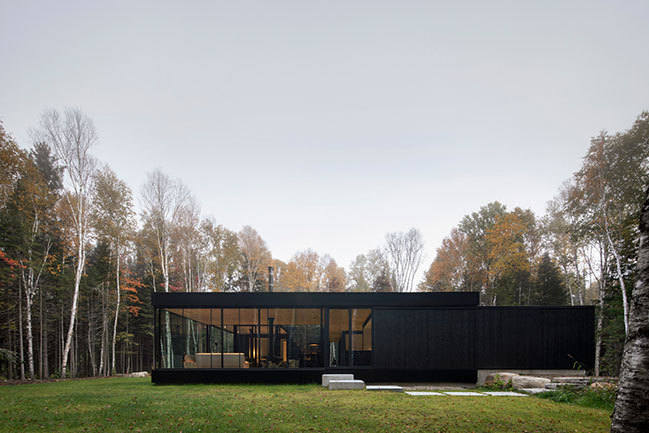
> La Barque Residence by ACDF Architecture
> Chalet La petite soeur by ACDF Architecture
From the architect: ACDF Architecture, a progressive Canadian firm internationally recognized for designing a new generation of meaningful and impactful buildings, is proud to unveil the Apple Tree House, a family retreat located in the heart of Quebec’s Lanaudière region. On a private lot engulfed by dense boreal forest, the single-story glass house epitomizes ACDF’s sensitive architectural approach to fostering human connections with nature.
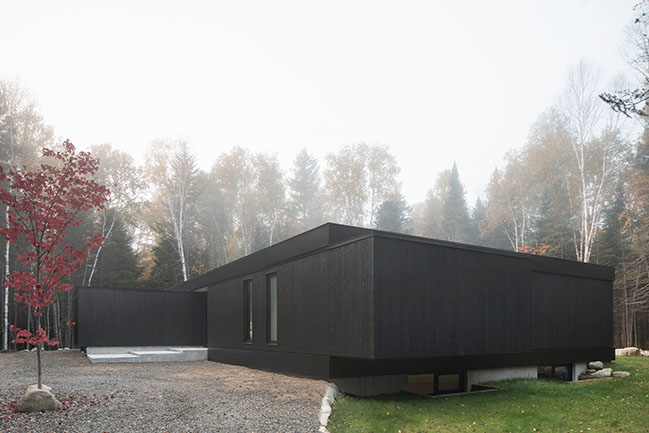
Built on a 250,000 sq. ft. forested plot, the urban family wanted a modern home to enhance their communion with nature, both internally and externally, while serving as a peaceful retreat enabling family members to reconnect with each other, and to also enjoy solitary moments.

The Apple Tree
During the very first explorations of the concept, the architects sought a sensitive approach for drawing nature inside of the house, while the owner embraced vivid childhood memories of growing up in an orchard environment. The apple tree was symbolic of his earliest encounters with nature as a child, and of the continuity of that connection years later while picking apples with his own children, part of an enduring tradition of quality time spent with the family in nature’s embrace. The apple tree was instantly incorporated into their collective vision, becoming the core of the project.

“The nostalgia of the orchard setting provoked a sincere and pure emotion, and we immediately knew that we had to incorporate an apple tree at the heart of the project in order to sow the seeds of the family's future history,” explains Maxime-Alexis Frappier, partner and co-founder of ACDF. “It became a central pillar for connecting the architecture, the house, and the family.”
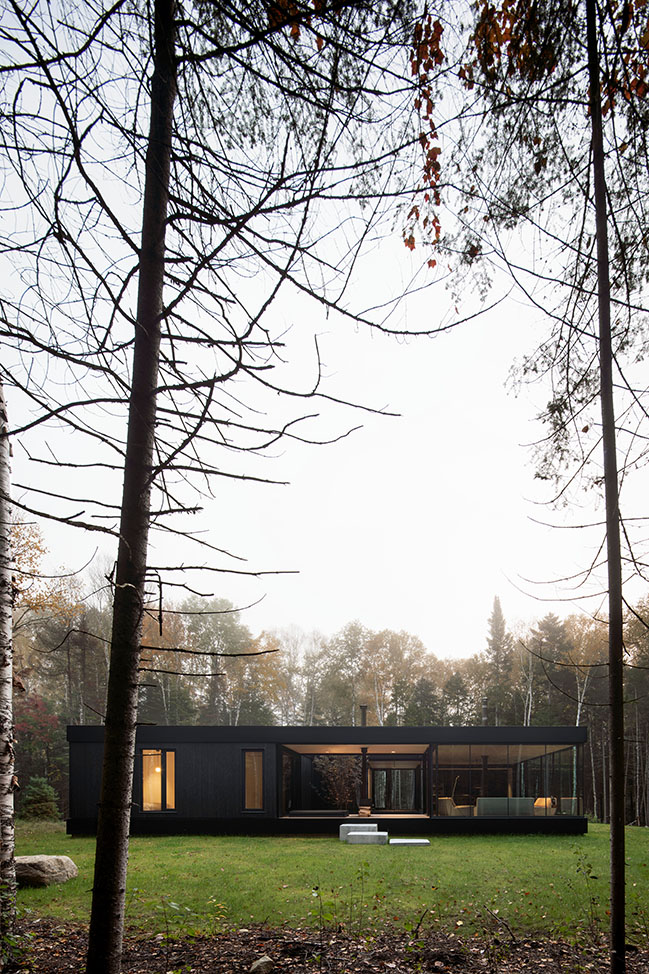
The integration of the apple tree enabled the host family to enjoy a much-desired connection with nature, played out through intimate relationships with various moods of the day, changing seasons, and weather conditions associated with each season. The children learned, and the parents relearned, how to care for the apple tree; watching it grow, trimming its branches, pre-emptively treating it for threatening diseases, and admiring its blossoms and its bearing of fruit. That relationship ensures that the surrounding nature of the house becomes so much more than just a spectacle of passive beauty. It has become a fixture of the family’s everyday lives, and it contributes to the awareness of nature's fragility and vital role on this planet. It serves as a living example of how humans can, and must, (re)learn the fundamentals of cohabitation with nature.
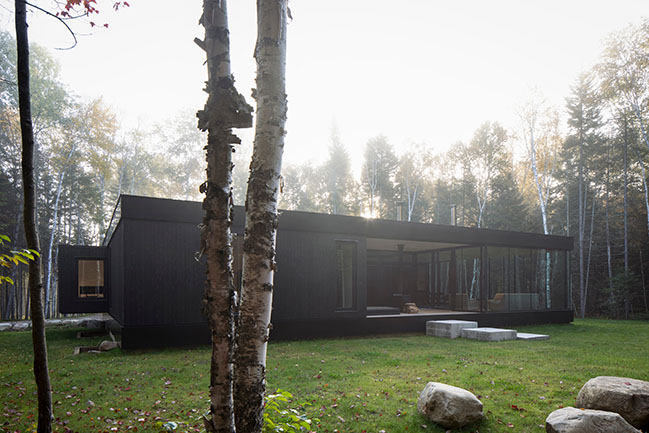
Interlinked glass and wood boxes
In order to integrate the apple tree in a manner that addressed the family’s desire to blur the lines between the interior of the house and its external natural beauty, ACDF focused on transparency and openness as the foundations of the obvious choice for the architectural concept: A modernist and minimalist glass house.
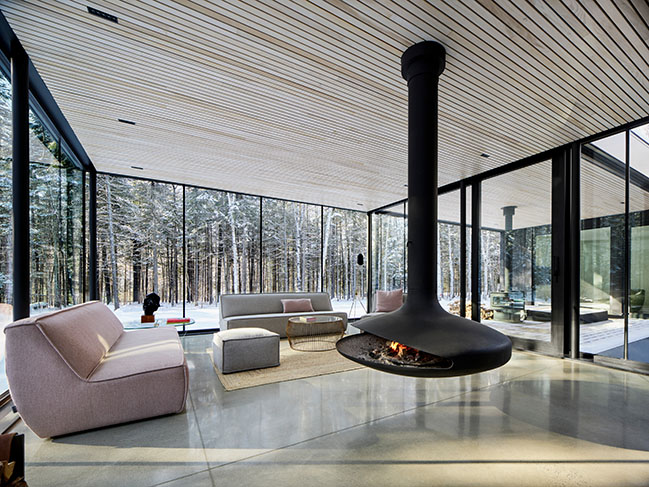
The firm’s design began with a simple placement of two concrete slabs, clad in solid aluminium frames, to define the horizontal limits of the structure. In the centre, to enable the replanting of the apple tree, an opening was created to maximize light penetration and frame views towards the sky and the treetops.
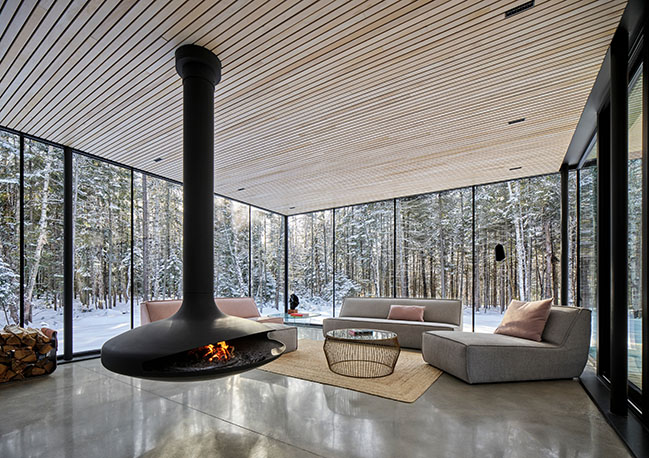
Three individual wooden boxes were then inserted between the horizontal planes, each slightly protruding, and each designed for its own unique purpose. The concept for the boxes was clear, and ACDF pushed, pulled, and reshaped them in order to precisely accommodate their envisioned functions.

One box houses the garage and servicing area of the home, and the second box is dedicated to the bedrooms and bathroom of the client’s children. The third box frames the master suite, comprised of a bedroom, a private lounge, and a bathroom. Each of the individual boxes offers a cozy, private retreat from the communal ambiance of the home’s main living space, yet they all maintain visual connections both to the natural setting outside, and to the home’s internal spaces across an open central courtyard that is home to the apple tree.
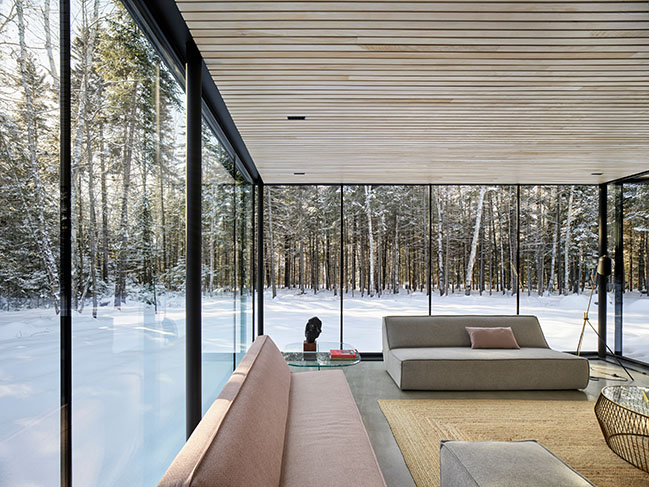
“The home is designed for connectivity, and glances in every direction provide views across openings to other spaces,” says Frappier. “That being said, the boxes were designed to respect the need for privacy, and their wall placements are intentional in their offerings of solitude.”
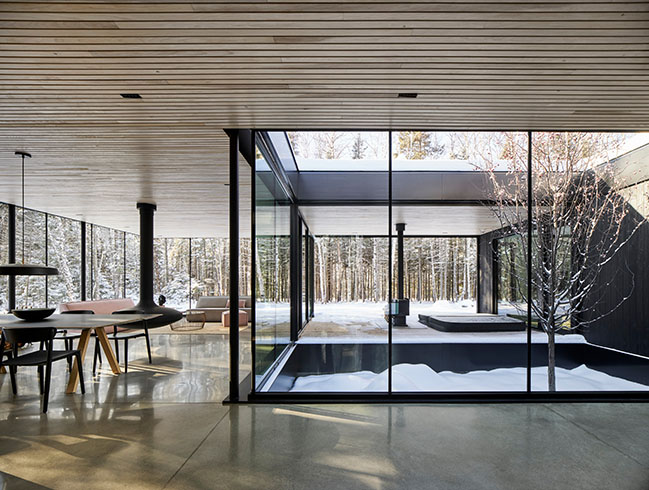
Seamless connections
Connections with the outdoors are attained through the design and application of multiple layers of composition that transition from the exterior to the interior. Upon approaching the house laterally, adjacent to the box housing the garage, large, almost institutional concrete blocks define a clear path of steps leading up to the main entrance. In designing both entrances, it was important to the firm that both the garage and the front door would lead to the same experiential entry point inside of the home.

“Positioning and composition is critically important in any process, and no matter where you enter this home, you are immediately immersed in the same rich experience,” explains Frappier. “The intent was to avoid having a secondary entrance that would not be architecturally interesting, or that would not fit into the transparency and openness of the overall design focus.”
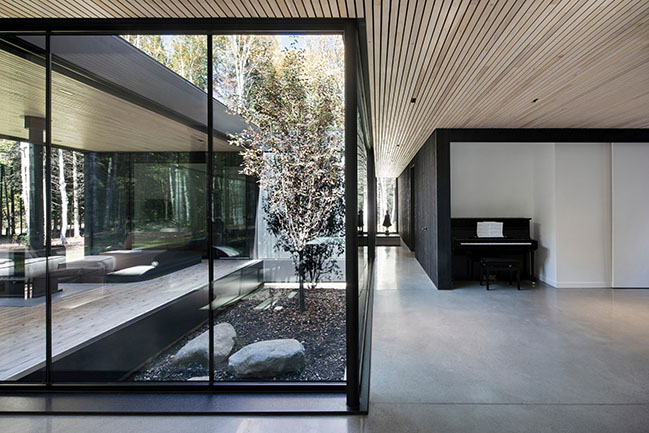
Upon approaching the main entrance, layers of glass provide insight into the internal lobby. Across openings in the central part of the home, a covered porch at the rear frames external views of the forest. On the internal side of that covered porch, in the centre of the main structure, a small, wind-protected open courtyard showcases the family tree, which thrives in its natural setting. The covered porch, with its wood stove and comfortable seating, was designed as a gathering space with an indoor/outdoor ambiance that is in tune with both its internal and external surroundings. Open on two sides, the covered porch is equipped with screens on descending rollers to ensure the best of both worlds, providing protection against insects and the elements. With the screens descended, the enclosed porch provides a feeling of being integrated with the home’s interior spaces.
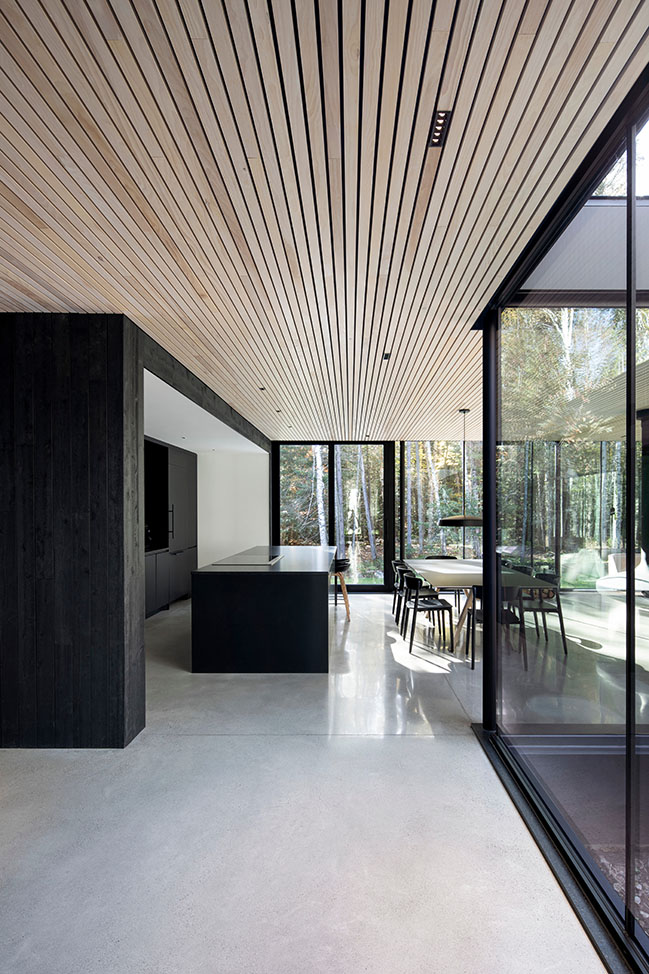
ACDF also aligned the home very carefully to maximize sun patterns, during all seasons, and openings that connect the spaces ensure that there is sunlight present throughout the day. In winter, the presence of abundant sunlight also helps to heat the concrete floors and prevent heat loss.

A window on the world
Careful planning and attention to detail define ACDF’s approach to the internal functionality of the Apple Tree House. An upright piano sits adjacent to the main entrance, infusing an air of elegance and sophistication into introductions to the home. The piano is neatly fitted in a custom-built alcove, strategically placed to enable playing of the piano without imposition on the broader dynamics of the main living area.
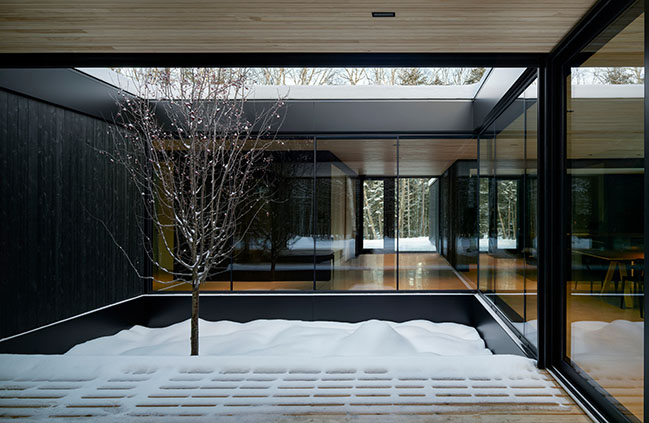
The expansive, open floorplate of the fully-glazed central living space features a polished concrete floor, with floor-to-ceiling windows providing a powerful and seamless connection with the natural beauty of the exterior. To counter reverberation that abundant glazing sometimes invites, ACDF installed wooden planks on the ceiling, with half-inch gaps between them. On the underside of the planks, the firm inserted a black fabric that further contributes to capturing reverberation, while ensuring the acoustic harmony of the open space. The open floorplate comprises a kitchen, a dining area, and a generous living room, illuminated by suspended lamps from Lambert et Fils, a Montreal-based supplier whose innovative lighting fixture have been integrated into several ACDF projects.
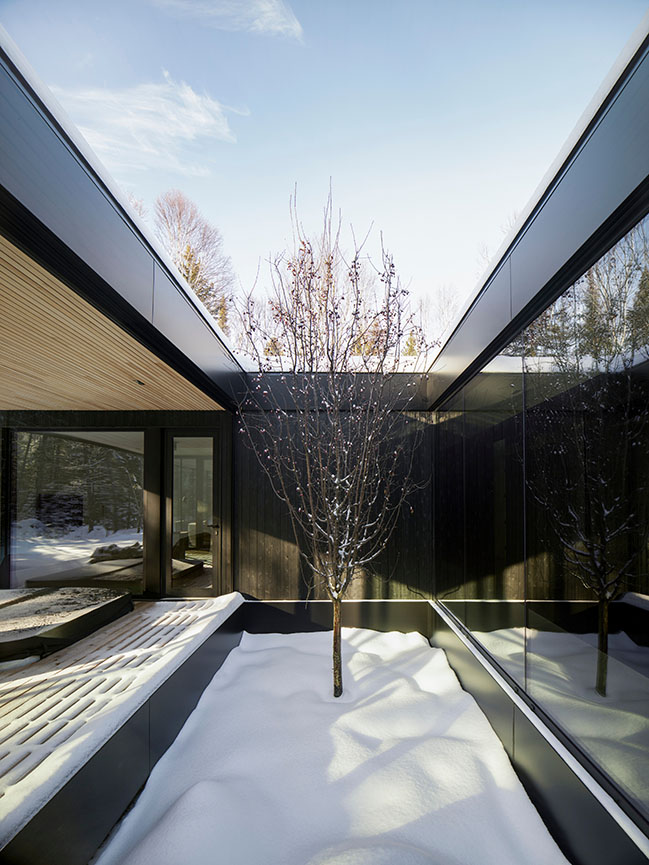
Emotion without extravagance
From bold skyscrapers, to the intimacy of a family retreat, the Apple Tree House is yet another reflection of ACDF’s innovative approach to the built environment. With a focus on user experiences at its core, ACDF’s portfolio continues to evolve with humanity positioned as the primary material, establishing new standards for creating emotion without extravagance. Well-planned, at a modest cost, the Apple Tree House’s performant design was achieved using basic structural standards, including primary wood construction, supporting steel columns, and horizontal concrete slabs.
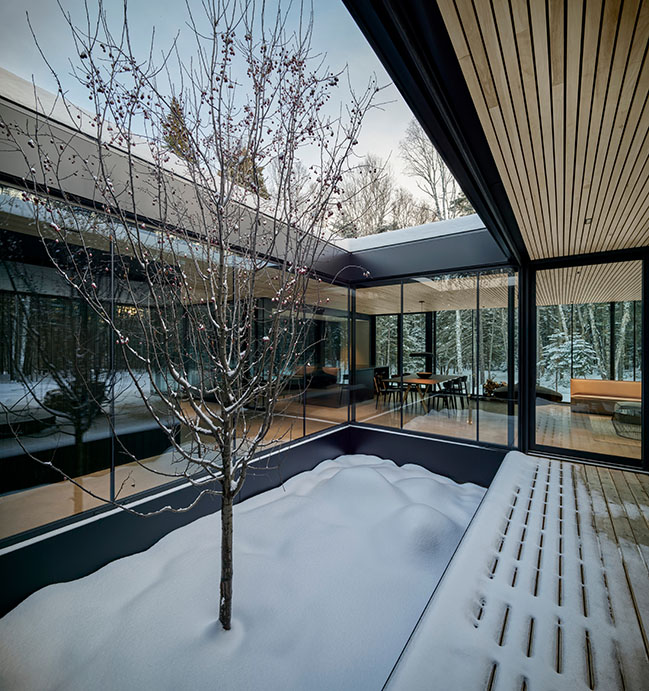
The expansive space is like a fluid work of art. A suspended, French-made Focus fireplace denotes the only decorative intrusion in the smartly, sparsely furnished space. The artwork’s main focal point is the beauty of the great outdoors, evolving through four seasons, and framed by the full transparency of the Apple Tree House’s glass walls. To maintain that balance, furnishings were carefully selected for their neutrality, including an Italian-made, solid wood dining table featuring simple lines and black and clear wood finishes that complement the overall design scheme. Quebec-designed furnishings complete the comfortable seating of the living room, with their light grey, pink, and green upholstery tones infusing subtle bursts of colour into the environment.
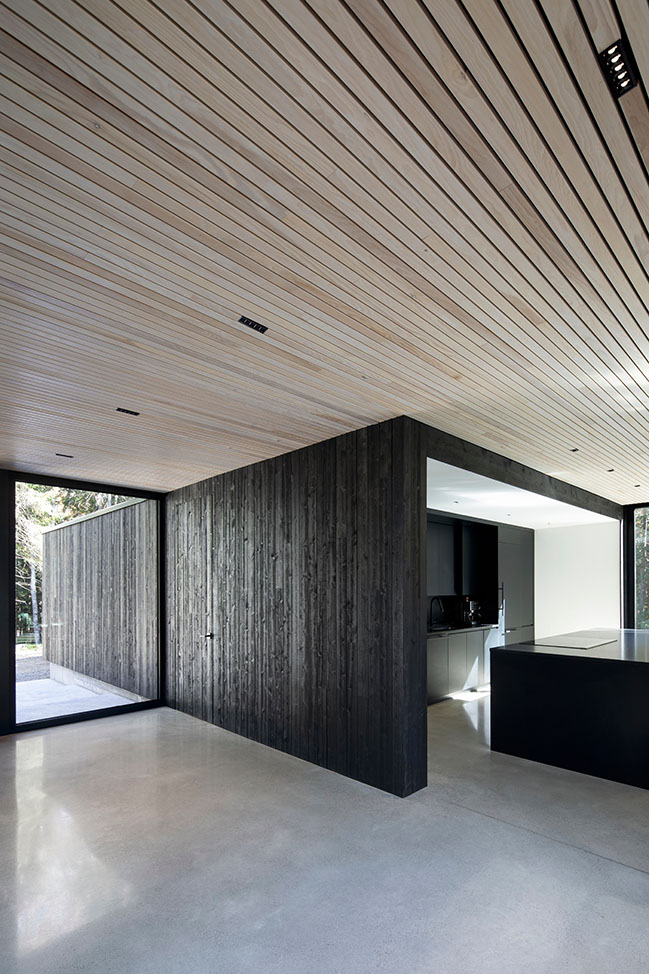
“The beauty of a single tree inspired architecture that is focused on the fulfillment of human emotions,” summarizes Maxime-Alexis Frappier. “The Apple Tree House is a proud example of our ability to establish deep connections with our natural environment, without needless sacrifice on either side of its blurred lines.”
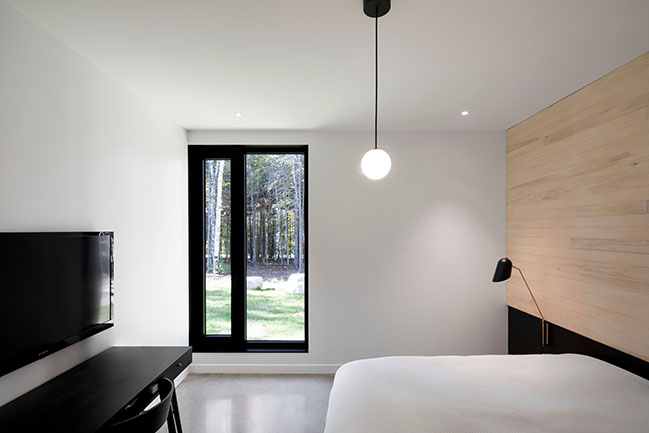
Architect: ACDF Architecture
Location: Saint-Donat-de-Montcalm, Canada
Year: 2021
Architectural Project Team: Maxime-Alexis Frappier, Martin Champagne, Mireille Létourneau
General Contractor: Marion Gauthier
Structural Engineer: Poincaré – Paul-Henry Boutros
Interior Design: ACDF Architecture
Landscape Architect: ACDF Architecture
Photographer: Adrien Williams
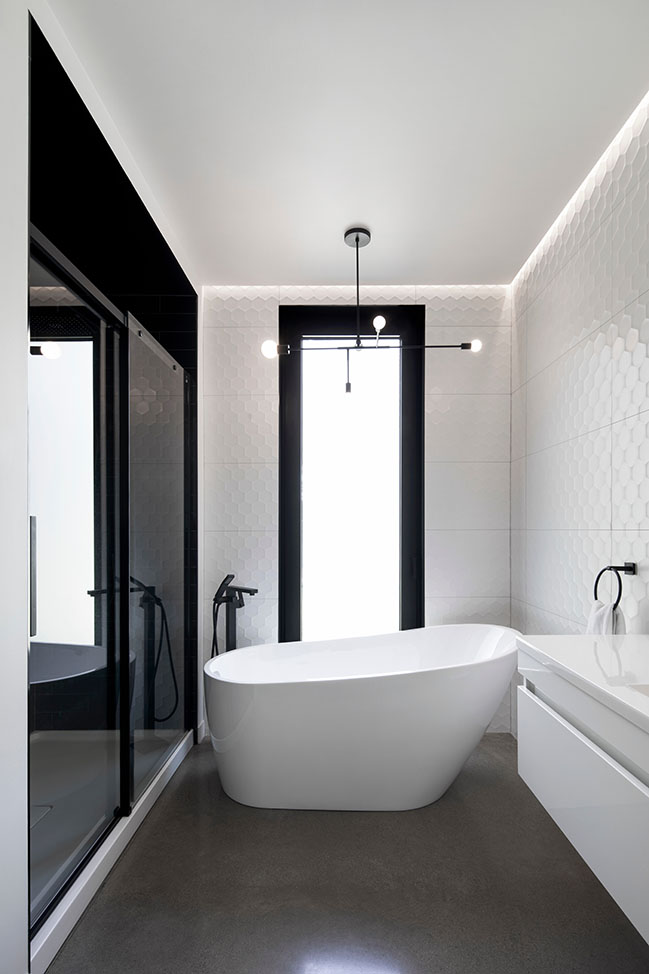
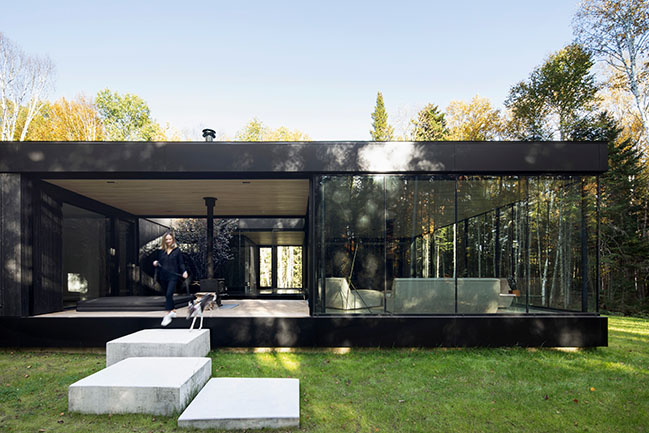
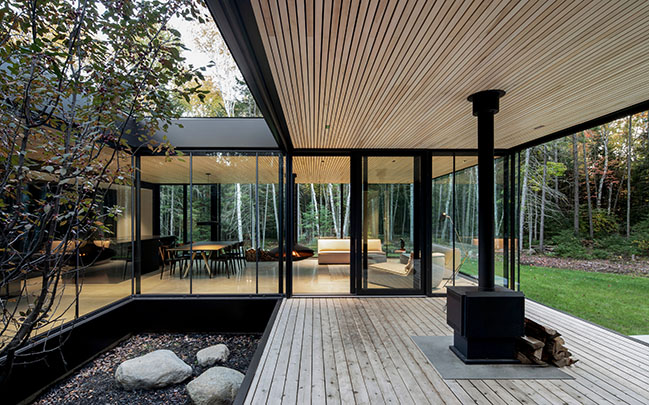
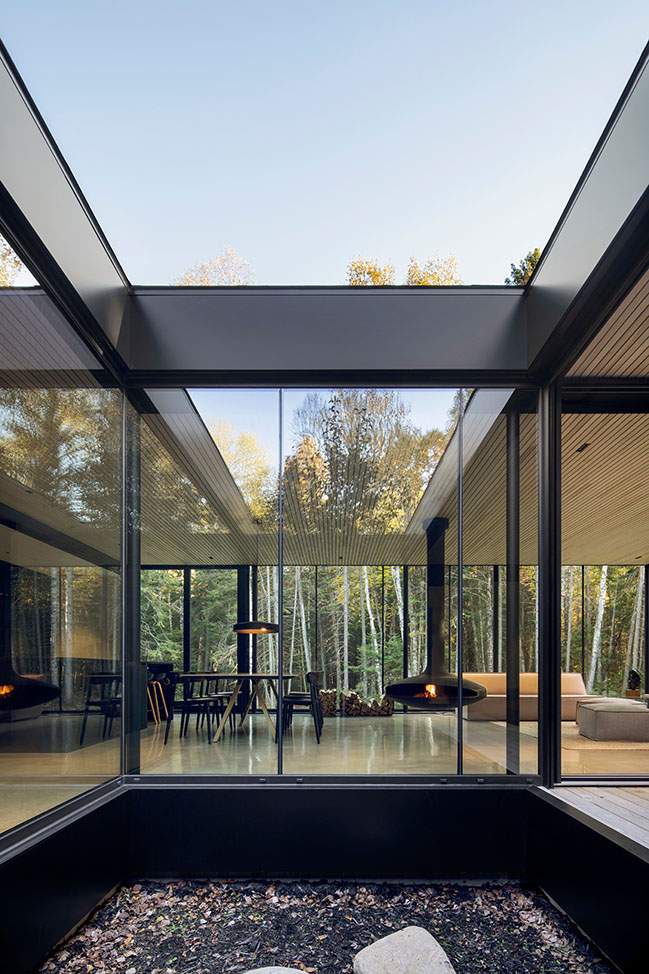
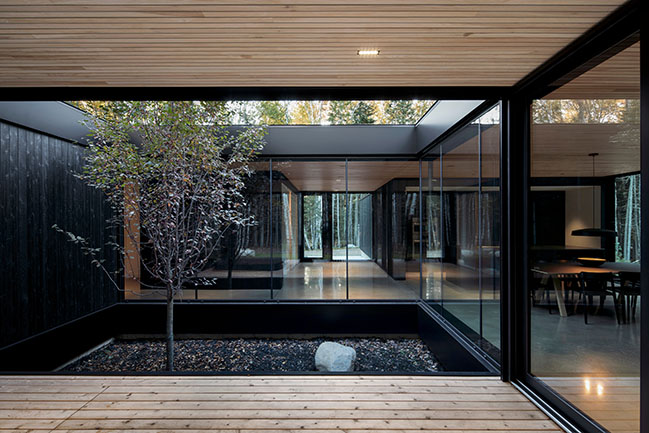
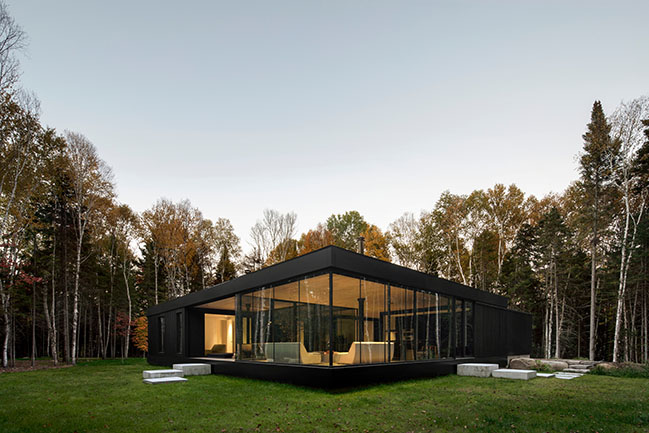
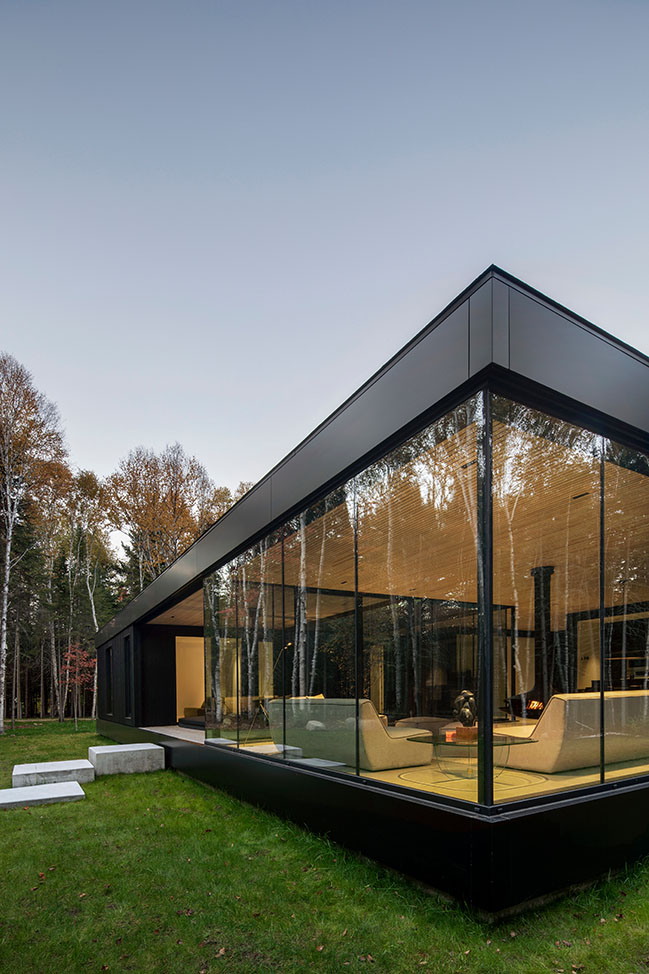

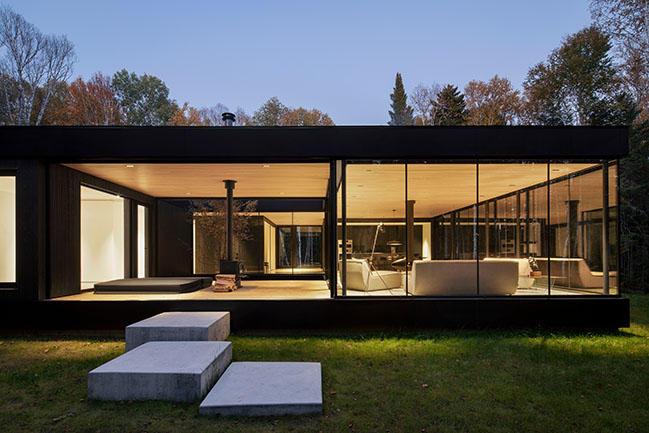


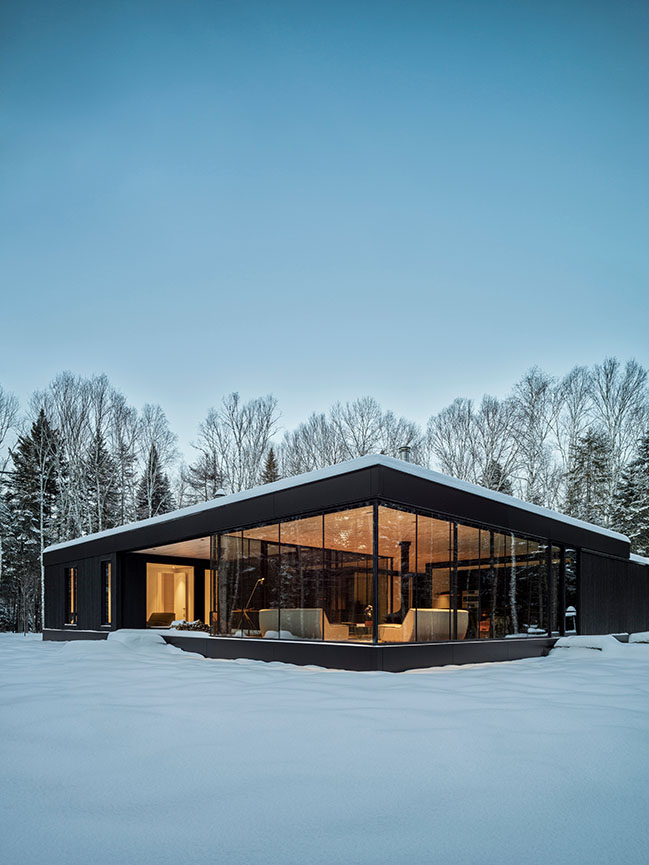
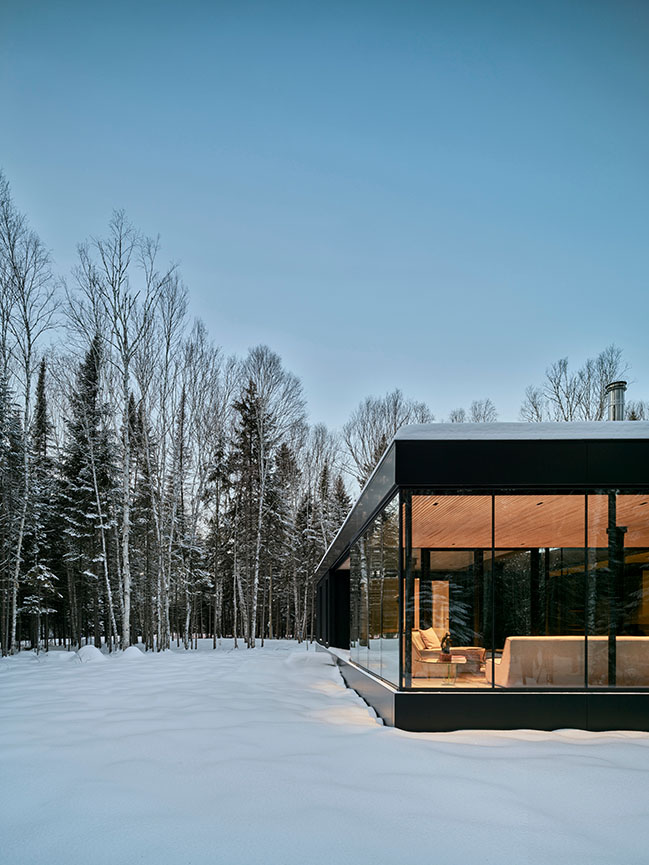
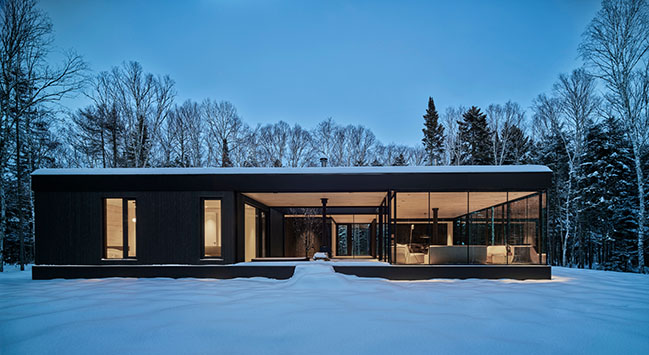
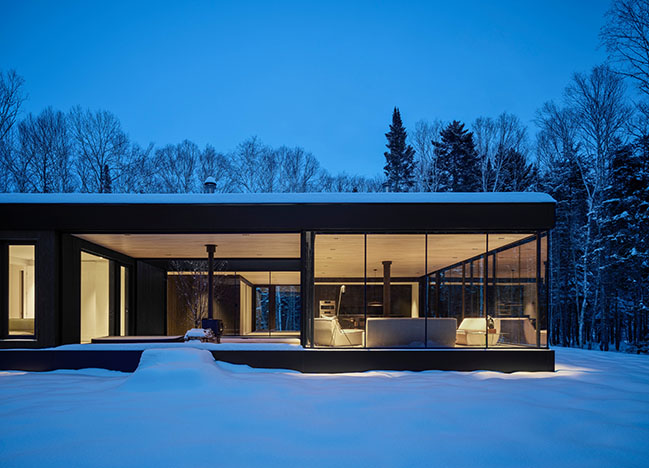
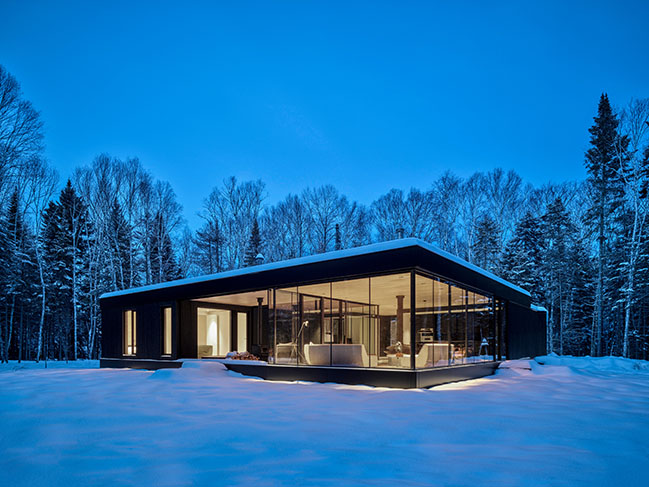
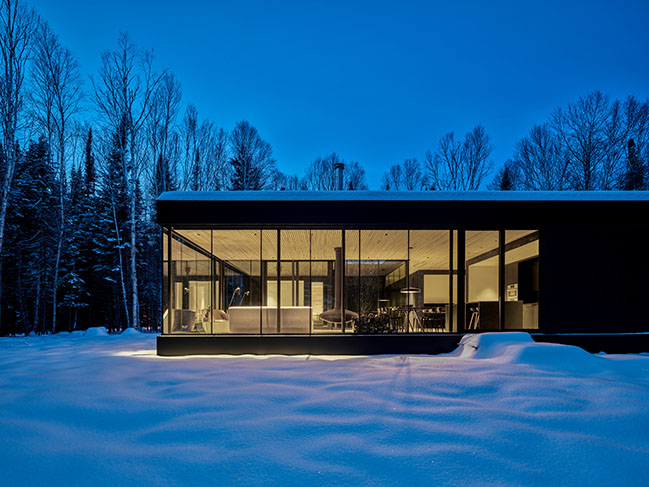
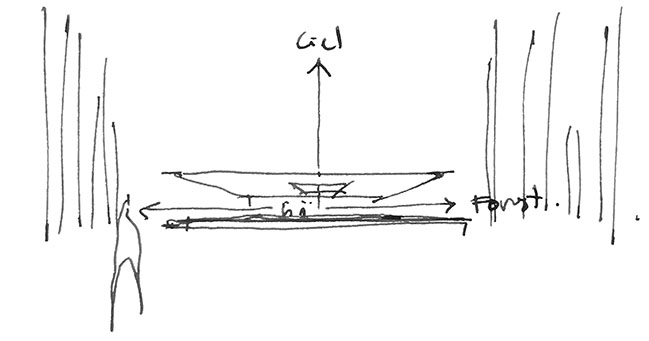
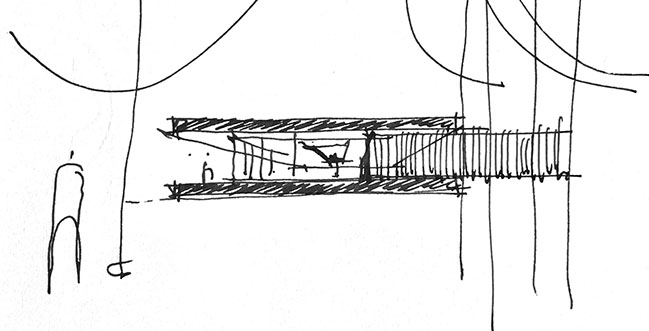

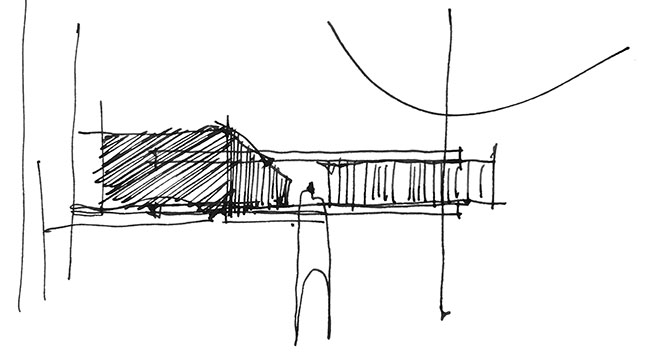


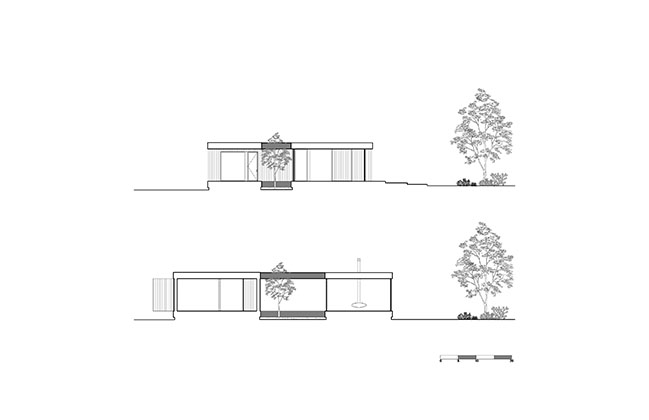
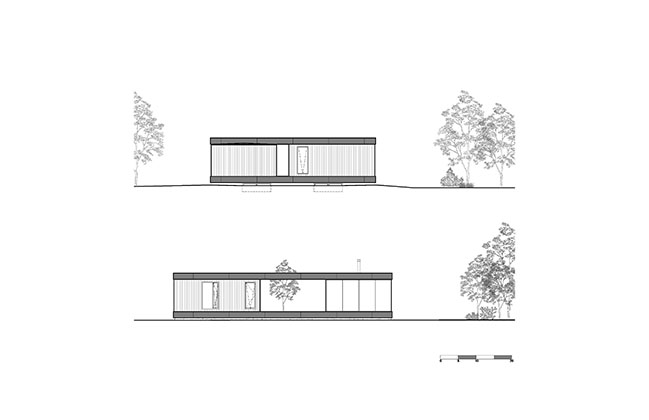
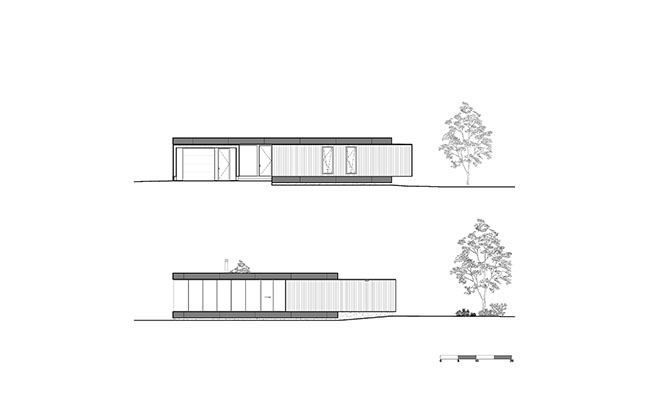

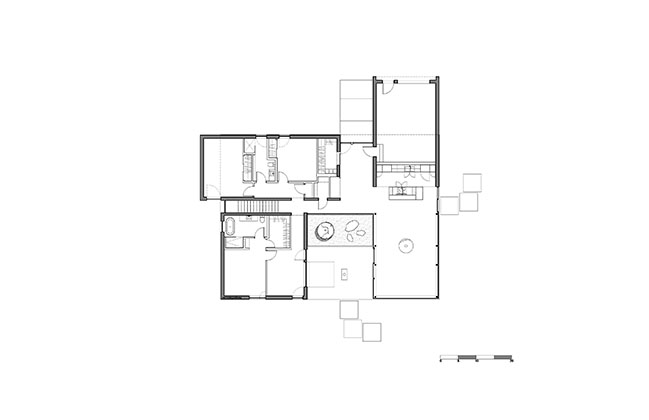
The Apple Tree House by ACDF Architecture
12 / 23 / 2022 ACDF Architecture is proud to unveil the Apple Tree House - A modernist glass residence embracing nature at its core...
You might also like:
Recommended post: Baltimore Bridge by CRA-Carlo Ratti Associati + Michel Virlogeux
